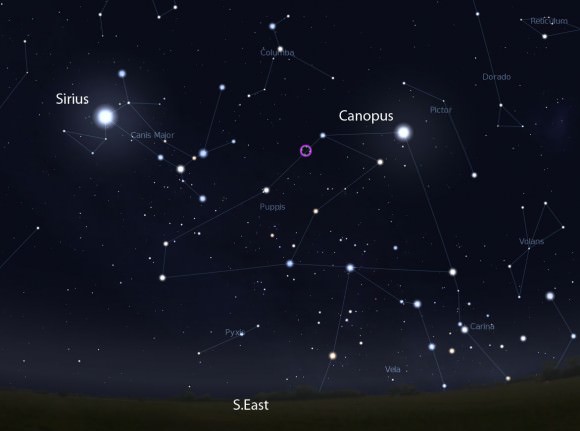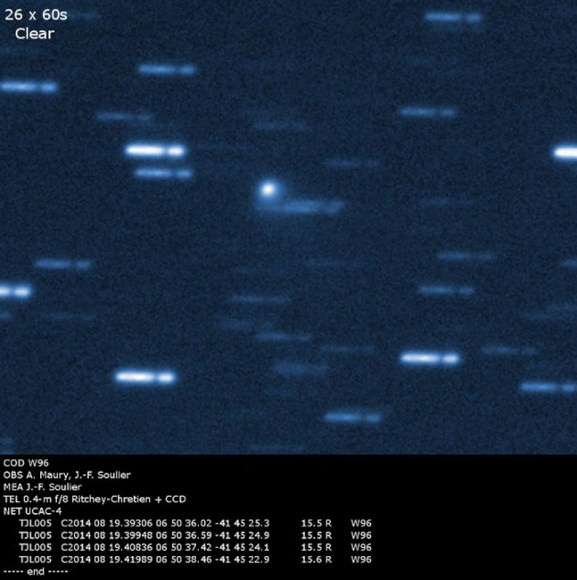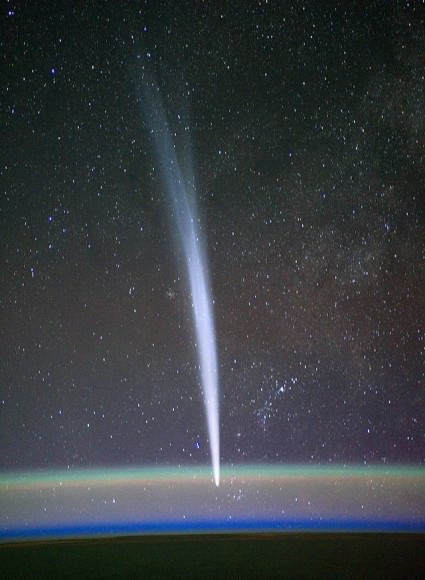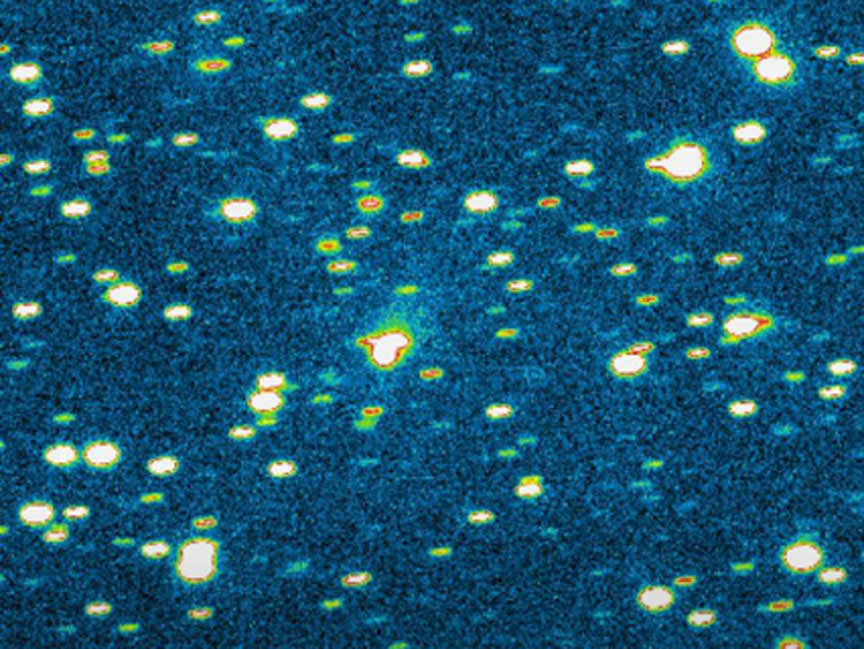It’s confirmed! Australian amateur astronomer Terry Lovejoy just discovered his fifth comet, C/2014 Q2 (Lovejoy). He found it August 17th using a Celestron C8 fitted with a CCD camera at his roll-off roof observatory in Brisbane, Australia.

“I take large sets of image triplets, i.e 3 images per star field and use software to find moving objects,” said Lovejoy. “The software I use outputs suspects that I check manually by eye.”
Most of what pops up on the camera are asteroids, known comets, or false alarms but not this time. Lovejoy’s latest find is a faint, fuzzy object in the constellation Puppis in the morning sky.

Glowing a dim magnitude +15, the new comet will be a southern sky object until later this fall when it swings quickly northward soon around the time of perihelion or closest approach to the sun. Lovejoy’s find needs more observations to better refine its orbit, but based on preliminary data, Maik Meyer, founder of the Comets Mailing List, calculates a January 2, 2015 perihelion.

On that date, it will be a healthy 84 million miles from the sun, but one month earlier on December 7, the comet could pass just 6.5 million miles from Earth and be well placed for viewing in amateur telescopes.
Everything’s still a little up in the air right now, so these times and distances are likely to change as fresh observations pour in. Take all predictions with a major grain of salt for the moment.

You might remember some of Terry’s earlier comets. Comet Lovejoy (C/2011 W3), a Kreutz sungrazer discovered in November 2011, passed just 87,000 miles above the sun’s surface. Many astronomers thought it wouldn’t survive the sun’s heat, yet amazingly, although much of its nucleus burned off, enough material survived to produce a spectacular tail.

More recently, Comet Lovejoy (C/2013 R1) thrilled observers as it climbed to naked eye brightness last November, managing to do the impossible at the time and draw our eyes away from Comet ISON.
Congratulations Terry on your new find! May it wax brightly this fall.
* Update: The latest orbit calculation from the Minor Planet Center based on 24 observations now puts perihelion at 164.6 million miles (265 million km) on February 14, 2015. Closest approach to Earth of 93.2 million miles (150 million km) will occur in January.


With a pathetic observation arc of only 2 days, perihelion could be anywhere from 1.8±1AU from the Sun. It is way too early to make claims of an Earth approach. The eccentricity of the comet is poorly constrained. Perihelion should occur in February 2015.
Hi Kevin,
I agree. That’s why I put in the caveats about ‘preliminary’ and the fact that more observations would change predictions. I tried to use the most updated information/predictions from the comets mailing list.
MPEC 2014-Q10 : COMET C/2014 Q2 (LOVEJOY) “based on 23 observations” has perihelion ~1.8AU from the Sun. MPEC 2014-Q10 places the closest Earth approach at about 150 million km (~1AU) from Earth in January 2015 with perihelion in February. Comets-ml #23783 only used 8 observations and is a poorer solution.
Thanks for the ‘heads up’ Bob! Updates appreciated.
How about that Rosetta mission, eh? I for one was expecting impact striations or compactions, and BANG! @ there they are! Sublimation and impact cratering too! WAY cool, as this is only the beginning of the mission. HO! I just can’t wait to see actual outgassing events!
You’re welcome Aqua4U!
Kevin,
Thank you for pointing me back to MPEC 2014-Q10. I have now included this update at the end of the article. I appreciate you alerting me.